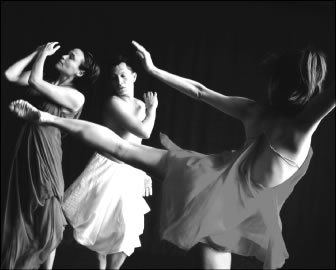BY BRIAN MCCORMICK
Stanford Makishi and OtherShore liven up the dance world
OTHERSHORE
Baryshnikov Arts Center
450 W. 37th St.
Oct. 10-11 at 8 p.m.;
Oct. 12 at 3 p.m.
$20; 212-279-4200 or bacnyc.org
Joining the ranks of the many new (and returning) performing arts executive directors around the city, Stanford Makishi quietly took over at the Baryshnikov Arts Center in January of 2008.
Makishi, who danced with Trisha Brown for seven years and then worked in her company’s administration before making a career at Carnegie Hall, succeeded founding director Christina Sterner, Mikhail Baryshnikov’s partner on many ventures, including the White Oak Dance Project.
“Carnegie Hall was a great place to work,” said Makishi. “I thought I was a lifer. The top musicians are lining up to perform there. I was surrounded by great, overqualified, smart people who are all really good at their jobs and who all lead interesting lives. I loved going to work.”
“When this opportunity arose,” Makishi added, “it was like a long courtship. I had many meals and other meetings with Misha over three-and-a-half months until the handshake. He really wanted to know who I was. Our conversations were primarily about art —film, music, theater, dance, visual arts — and travel.”
The first few months Makishi “worked in the shadow” of Sterner, but in the past few months, he has emerged, shining his leadership on business and artistic matters. The non-profit organization is in the final stages of purchasing its space — three floors of studio and office space and a 299-seat theater in the 37 Arts complex.
“Owning the space makes it easier to say [to artists] please come,” said Makishi. “People are clamoring to rent the space.”
This month, BAC further distinguishes itself by presenting the debut of OtherShore. It is a new dance company formed by two dancers in their mid-30s for dancers in their mid-30s; Brandi Norton and Sonja Kostich want to continue dancing — on their own terms.
“There’s no way I’d get into a ballet company,” declared Kostich, whose credits include ABT, San Francisco Ballet, and White Oak. “It’s not normal for a ballet dancer at age 36 to go to an audition.” While the situation is not exactly the same for modern dancers, former Trisha Brown Company dancer Norton said the opportunities for dancers her age are much more limited.
“Rather than trying to get into a company,” she said, “we wanted to create an opportunity that might not be too common elsewhere.”
Big Dance Theater is not known for choreographing for repertory companies, but Kostich said when she moved back to New York five years ago and saw the company, she wanted to do that work. Parson and Lazar were the first picks. Spence was an obvious choice, and Liang rounded out the selection the women were seeking. Jennifer Tipton is doing the lighting. Mark Kostabi is also contributing.
In addition to presenting the work, BAC also gave the new company a residency. They know they have to prove themselves, but it helps to have space.
“It feels like home,” said Kostich.
“We exist for artists,” said Makishi. “Everything we do is consistent with developing a presence as a lab for emerging and international artists, and others that don’t have a loud voice here in New York.
“Shortly after I got here,” said Makishi, “I saw Richard Siegal perform. I loved what I saw in ‘As If Stranger,’ and had the opportunity to meet him through his manager. I asked him if we could help in any way.”
In mid-October, Studio Six Theater Company with Dmitry Troyanovsky will come in for two weeks, followed by photographer David Leach and choreographer Stephanie Nelson.
As for the long-term vision, Makishi points to Misha.
“Look at the last 20 years,” he said. “White Oak itself was always evolving, and was not in spirit the same at the end. If anything can be said about the center so far, in it’s three years of life, it’s that this is a place to explore risks.”
































